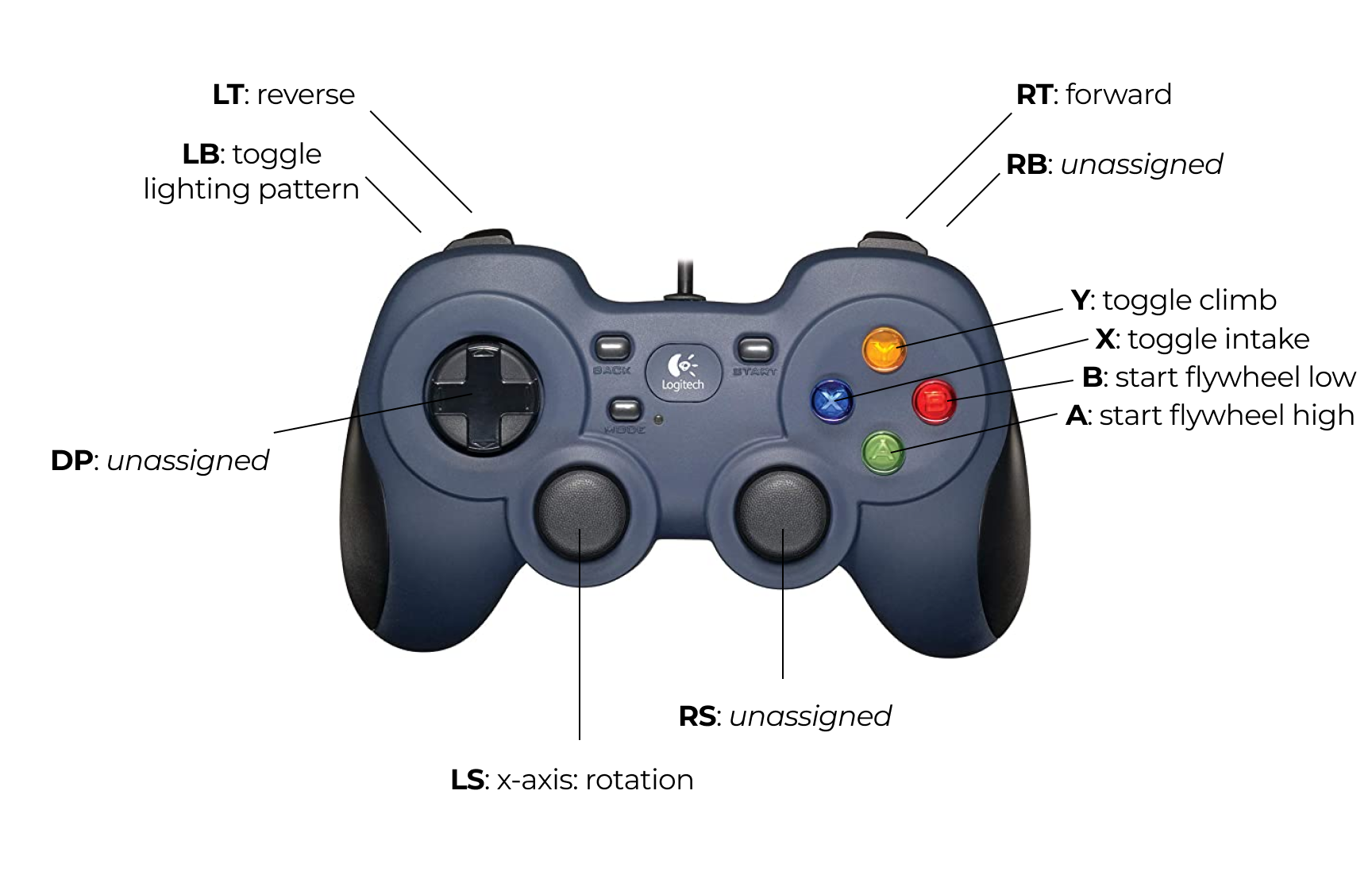MaxX
MaxTech 4343's and NextGen 914's robot code for Rapid React, 2022.
Setup
General
- Clone this repository.
- Run
./gradlew --helpto initialize Gradle and view its options. - Run
./gradlew tasksto see available tasks.
Some common tasks are simulateJava and deploy.
Controls
Code highlights
Library
The library contains robot-agnostic support code. A more accurate description for each type can be found in each package.
Annotations
The library contains reader-oriented Java annotations, such as IncompleteIO, that mark specific information for the user.
Command
The library contains wrappers to WPILib's command-based control system, which offer additional, strongly-typed flexibility at no cost.
Controllers
The library contains state-space controllers for elements, such as flywheels, that enable smooth, stateful, multi-input multi-output transformations.
Logging
The library contains support for logging information from the robot to the local device. This information is also passed into NetworkTables.
Managers
The library contains managers, that have the ability to monitor and manage WPILib-specific elements, such as subsystems. These managers go hand-in-hand with the different abstractions offered by command.
Statemachines
The library contains support for state machines, an orientation specifically designed for type safety.
Wrappers
The library contains extended support and shims for some hardware, where appropriate. These each still depend on the vendored dependencies: they only extend hardware support, not rewrite.
Robot code
Beyond our library, there is also robot-specific code.
com.maxtech.maxx
The top-level base for robot programs. Contains pre-defined constants as well as other boilerplate code.
packages.maxtech.maxx.subsystems
The package for command-based subsystems. Note that these commonly also contain state machines and are instanced types.
packages.maxtech.maxx.subsystems.*
Most subsystems have differing I/O between team robots. These each own a folder to their name, with a few common elements. The following is an example for the flywheel subsystem package:
Flywheelis the high-level subsystem, which contains public methods and internal state. It also keeps a reference to some type that implementsFlywheelIO, that is decided during runtime.FlywheelIOis the interface for I/O. It does not implement any code itself, but rather creates a "template" for other classes to implement. Some example methods that I/O interfaces include aregetVelocity,setVoltage, etc.FlywheelIOMaxis the FlywheelIO implementation for Max X. It implements all methods required by FlywheelIO, and holds references to any related I/O objects (commonly, motor controllers). The latter point is, in fact, the whole reason for this structure.FlywheelIOPeteris the FlywheelIO implementation for Peter, similar to above.
packages.maxtech.maxx.commands
The package for command-based commands.
packages.maxtech.maxx.commands.autonomous
The package for autonomous commands. Contains pathweaver wrappers as well as Limelight-specific autonomous code.
Vision
The /vision folder also contains Limelight vision code, written for tracking colored balls. Please read more in the folder-specific README.

